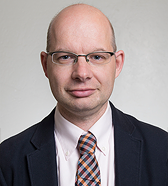 Scientist-in-Residence
Scientist-in-Residence
[email protected]
Monterey, CA
831.647.4638
Background
Dr. Ferenc Dalnoki-Veress is Scientist-in-Residence at CNS and holds an MSc and PhD in high energy physics from Carleton University, Canada, specializing in ultra-low radioactivity background detectors and has professional experience in the field of astroparticle physics, primarily neutrino physics.
He has been involved in several major discoveries in the field of neutrino physics and has worked on several international collaborations in Canada, Germany, Italy, and the United States (see below) including the Sudbury Neutrino Observatory (SNO), Double Chooz and Borexino experiments. He was a member of the SNO Collaboration that won the 2015 Nobel Prize in physics. He is also a laureate along with his team of the 2016 Breakthrough Prize in Physics.
He has contributed to more than 40 articles in refereed and non-refereed journals.
Science in the Public Interest
After a rewarding career as an experimental physicist (see below) in academia, he has switched fields to physics in the public service. After a postdoctoral position at Princeton University’s Physics Department in 2008, he became a Professional Specialist at the Princeton Program on Science and Global Security (Woodrow Wilson School of International and Public Affairs) working on the development of simulations of novel detection schemes for checking the declared HEU inventories of naval-reactor cores.
He joined CNS in 2009, and has been focusing on the proliferation of fissile materials, nuclear spent fuel management, nuclear reactor safety, emergency preparedness and verification of nuclear disarmament.
Dr. Dalnoki-Veress is a principal investigator (PI) of several projects and has taken a leadership role in one of the 4 projects of the Center for Disease Control’s PERRC (Preparedness and Emergency Response Research Center) in collaboration with the UC Berkeley Center for Infectious Disease & Emergency Readiness (CIDER).
His recent work analyzing radionuclide data from the Fukushima crisis has been quoted in Nature Magazine, New Scientist, Time Magazine, and newspapers. He has contributed to a Q&A in Time Magazine’s Ecocentric blog on the hazards of spent nuclear fuel safety and security.
Educational Initiatives
Dr. Dalnoki-Veress recognizes that knowledge of science is crucial for understanding weapons of mass destruction and the security threats they pose. He has spearheaded several initiatives to promote science education at MIIS including a course entitled “Science and Technology for Weapons of Mass Destruction,” a requirement for all incoming nonproliferation and terrorism students.
Dr. Dalnoki-Veress, Dr. Jim Williams from the International Environmental Policy (IEP) department and Dr. Patricia Lewis established a science boot camp course taught by Mark Bishop (“Atoms First” textbook) which prepares students for science related courses at MIIS. The unique IEP-CNS partnership launched a cross-program seminar in the fall semester 2011 entitled “After Copenhagen and Fukushima: The Nuclear Future in a Climate and Security Constrained World”.
Dr. Dalnoki-Veress also teaches/co-teaches several courses where science meets policy, such as “Nuclear Renaissance and Nonproliferation,” “Nuclear Treaty Verification,” and the workshop “Nuclear Weapons and Technology”.
Ultra-Low Background and Neutrino Physics
During the tenure of Dr. Dalnoki-Veress’s research career, he has been involved in several major discoveries in the field of neutrino physics. Neutrino physics is the study of indivisible particles that have significant roles in understanding stellar (star) energy production, the nature of matter, and cosmology.
In 2002 his work in Canada at the Sudbury Solar Neutrino Observatory (SNO) contributed to the first definitive proof that neutrinos have finite mass. The SNO result was ranked as the top three scientific breakthroughs of 2002 for Science Magazine, Discover Magazine, and the American Institute of Physics.
From 2003 until 2005 he worked at the Max Planck Institute for Nuclear Physics in Heidelberg, Germany to investigate further low background techniques in collaboration with participants from the Space Science Division, E. O. Hulbert Center for Space Science of the United States Naval Research Laboratory. He was a member of the Double Chooz project, an international collaboration to measure anti-neutrinos produced by fission in nuclear reactors.
In 2005 he joined Princeton University to work at the Gran Sasso National Laboratory near L’Aquila, Italy on the Borexino solar neutrino experiment. His efforts contributed to the first real-time measurement of low energy solar neutrinos heralded in 2007 by Nature magazine as a “triumph for experimenters”. Note that techniques developed in the interests of neutrino and low background physics rely on measuring extremely rare signals just as often the case in the fields of nuclear forensics, nuclear archaeology, nuclear safeguards monitoring and the detection of radioactive gases from nuclear tests.
CNS Work
- OP#33: WMD Proliferation Risks at the Nexus of 3D Printing and DIY Communities
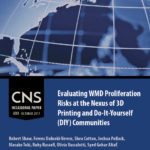 Occasional Paper #33 examines the degree to which additive manufacturing – including its distribution and use – may be introducing new proliferation risks.
Occasional Paper #33 examines the degree to which additive manufacturing – including its distribution and use – may be introducing new proliferation risks. - Technical and Political Insights into North Korea
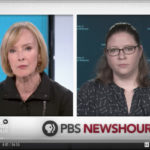 Warring words, nuclear tests, and increased missile capabilities: CNS experts on the developments and implications.
Warring words, nuclear tests, and increased missile capabilities: CNS experts on the developments and implications. - North Korea’s Nuclear Bomb: Can We Work Out Its Power?
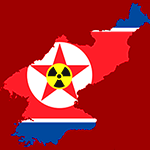 How do we work out the size and nature of North Korea’s nuclear test? A physicist explains.
How do we work out the size and nature of North Korea’s nuclear test? A physicist explains. - Improving the Security of All Nuclear Materials
 A report on legal, political, and institutional options to advance international oversight.
A report on legal, political, and institutional options to advance international oversight. - Africa’s growing and neglected cancer problem: We will all suffer
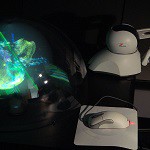 By helping countries acquire linear accelerators and train associated personnel, the international community has the opportunity to improve public health and security simultaneously.
By helping countries acquire linear accelerators and train associated personnel, the international community has the opportunity to improve public health and security simultaneously. - Treatment, Not Terror
 A new study by Miles A. Pomper, Ferenc Dalnoki-Veress, and George M. Moore, explores how to both promote cancer therapy in developing countries and prevent radiological terrorism.
A new study by Miles A. Pomper, Ferenc Dalnoki-Veress, and George M. Moore, explores how to both promote cancer therapy in developing countries and prevent radiological terrorism. - OP#24: Strengthening the ROK-US Nuclear Partnership
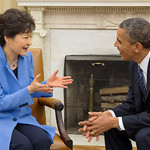 Occasional Paper #24: This report identifies challenges and opportunities for the next phase of the ROK-US nuclear partnership.
Occasional Paper #24: This report identifies challenges and opportunities for the next phase of the ROK-US nuclear partnership. - Xenon and Particulates: A Qualitative Discussion of Sensitivity to Nuclear Weapon Components and Design
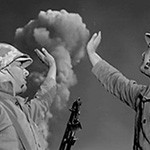 Scientist-in-residence Ferenc Dalnoki-Veress looks at how radionuclide measurements can help determine information about North Korea’s January 7 nuclear test.
Scientist-in-residence Ferenc Dalnoki-Veress looks at how radionuclide measurements can help determine information about North Korea’s January 7 nuclear test. - Video Analysis of North Korean Missile Test
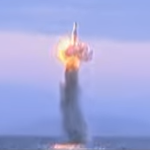 The media show interest as CNS experts analysis of North Korea’s missile test video was found to be manipulated and the test itself a failure.
The media show interest as CNS experts analysis of North Korea’s missile test video was found to be manipulated and the test itself a failure. - Understanding the Fuel Cycle in the Iran Agreement
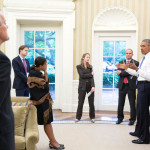 CNS’s scientist-in-residence discusses the ways the Iran deal closes all possible routes to the bomb.
CNS’s scientist-in-residence discusses the ways the Iran deal closes all possible routes to the bomb.
Selected Publications
- Direct measurement of the 7 Be solar neutrino flux at Borexino, C. Arpesella et al. (Borexino Collaboration). 2008. 6pp. Phys.Rev.Lett.,101:091302,2008.
- First real time detection of Be7 solar neutrinos by Borexino, C. Arpesella et al., Physics Letters B, Volume 658, Issue 4, 3 January 2008, Pages 101-108 e-Print: arXiv:0708.2251.
- A Germanium Spectrometer for Routine Characterization of Samples with the Sensitivity of Double Beta Decay Spectrometers, G. Rugel et al. Nuclear Physics B – Neutrino 2004 Proceedings Supplements, Volume 143, June 2005, Page 564, 2005.
- Direct Evidence for Neutrino Flavor Transformation from Neutral-Current Interactions in the Sudbury Neutrino Observatory, Q.R. Ahmad et al. (The SNO Collaboration), Phys.Rev.Lett., 89, 011301, 2002.
- Measurement of Day and Night Neutrino Energy Spectra at SNO and Constraints on Neutrino Mixing Parameters, Q.R. Ahmad et al. (The SNO Collaboration), Phys.Rev.Lett., 89, 011302, 2002.
- Measurement of the Rate of νe + d → p + p + e − Interactions Produced by 8 B Solar Neutrinos at the Sudbury Neutrino Observator, Q.R. Ahmad et al. (The SNO Collaboration) Phys.Rev.Lett., 87, 071301, 2001.
